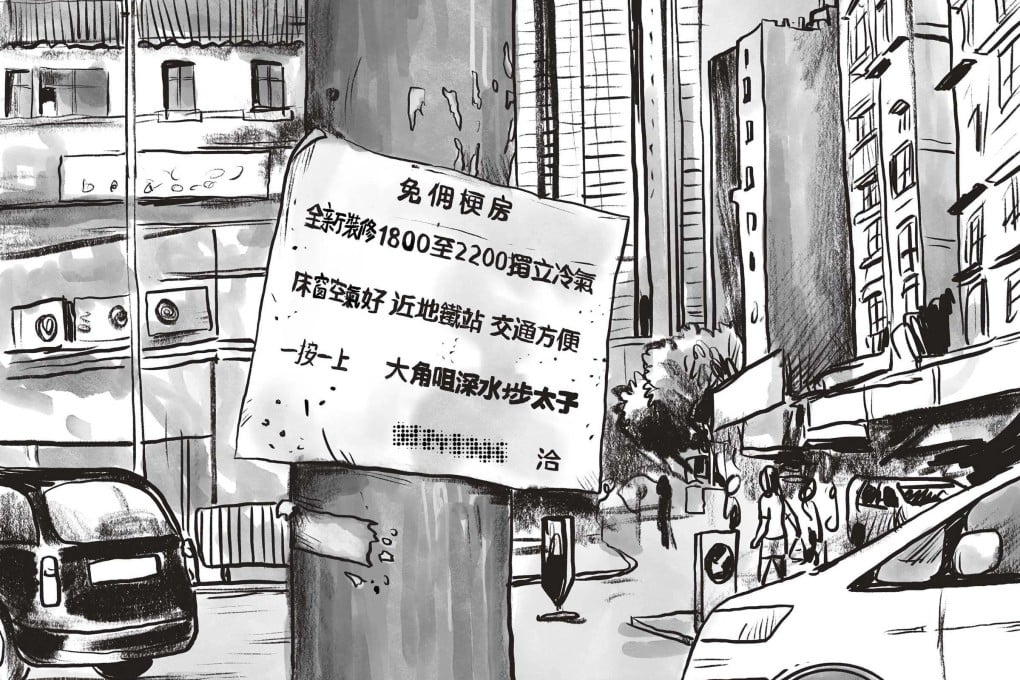Hong Kong’s subdivided flats: depression, cockroaches, rats and shame add up to misery for people in subdivided flats
- Poor living conditions take a toll on physical, mental health of 220,000 sharing the city’s smallest living spaces with many others
- Many suffer muscle strain, cardiovascular diseases and respiratory problems, as well as mental disorders, and some blame their poor living conditions

Siumei* prepares dinner in the living room of the 100 sq ft space she calls home in Mong Kok, while her seven-year-old son does his homework at a massage bed near her.
The 42-year-old divorcee lives with her son and widowed mother, 70, in a subdivided unit too small to have a separate kitchen.
The adults eat at a small foldable table, while the boy has his meal on the bed, with a line of drying laundry hanging over him.
After dinner, Siumei plays with her son on the floor while her mother watches TV. Sometimes the three go for a walk outside to leave their tiny space for a while.
Their 10 sq ft bathroom, most of which is occupied by the toilet and sink, is so small that Siumei must stand outside to help her son bathe. The blocked drainage means they can only shower for less than five minutes at a time, or smelly waste water will flood the floor.

